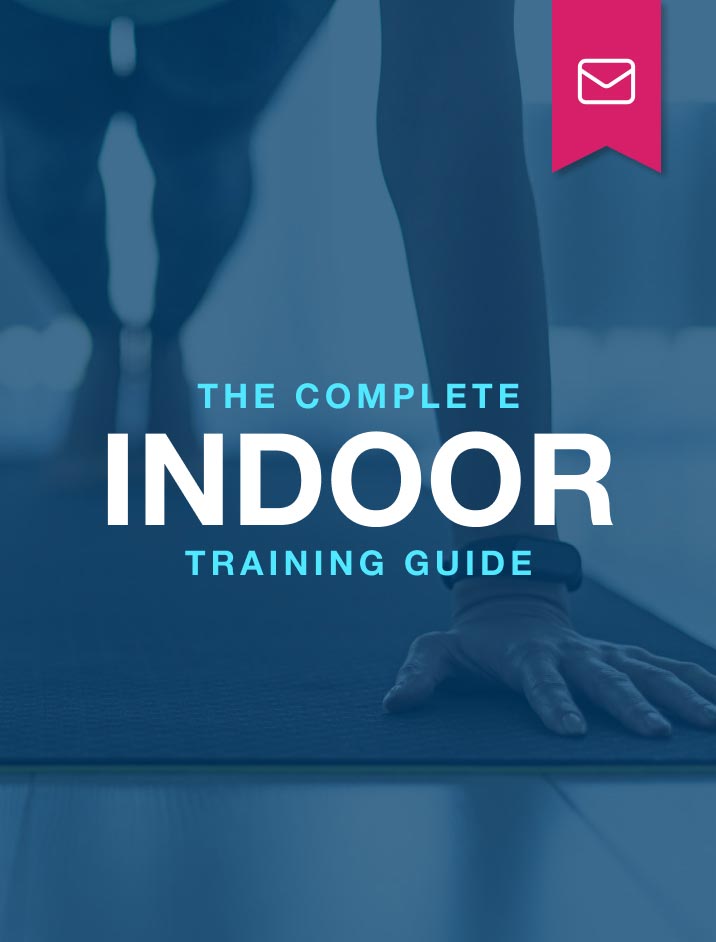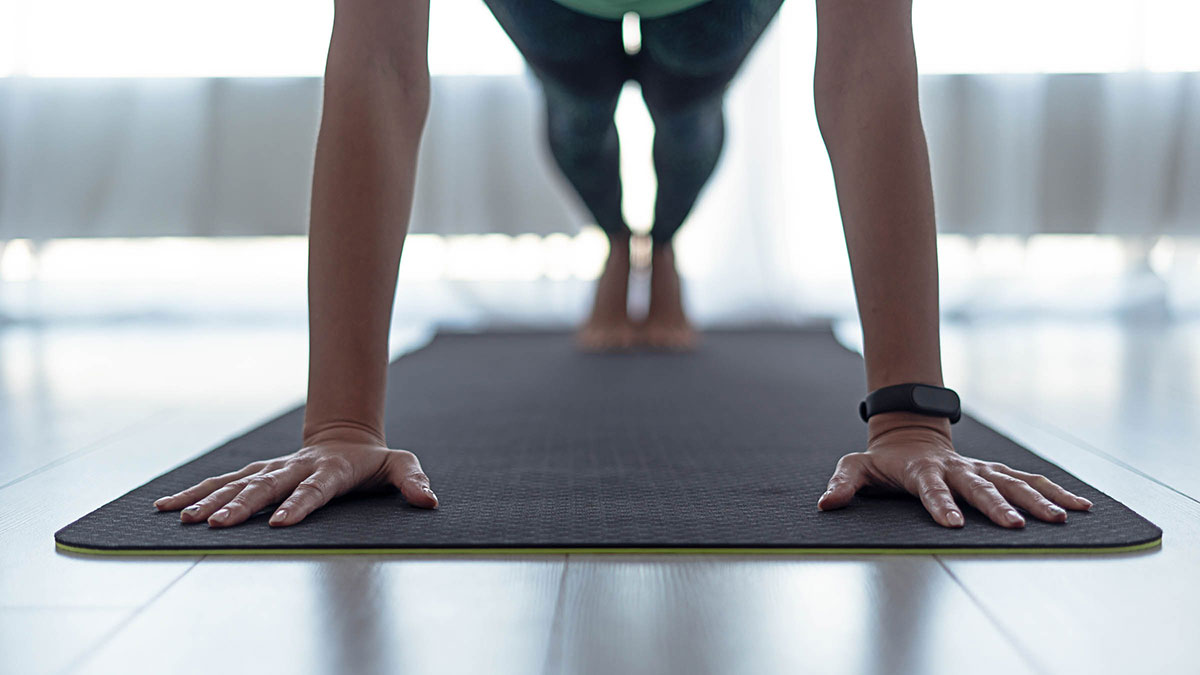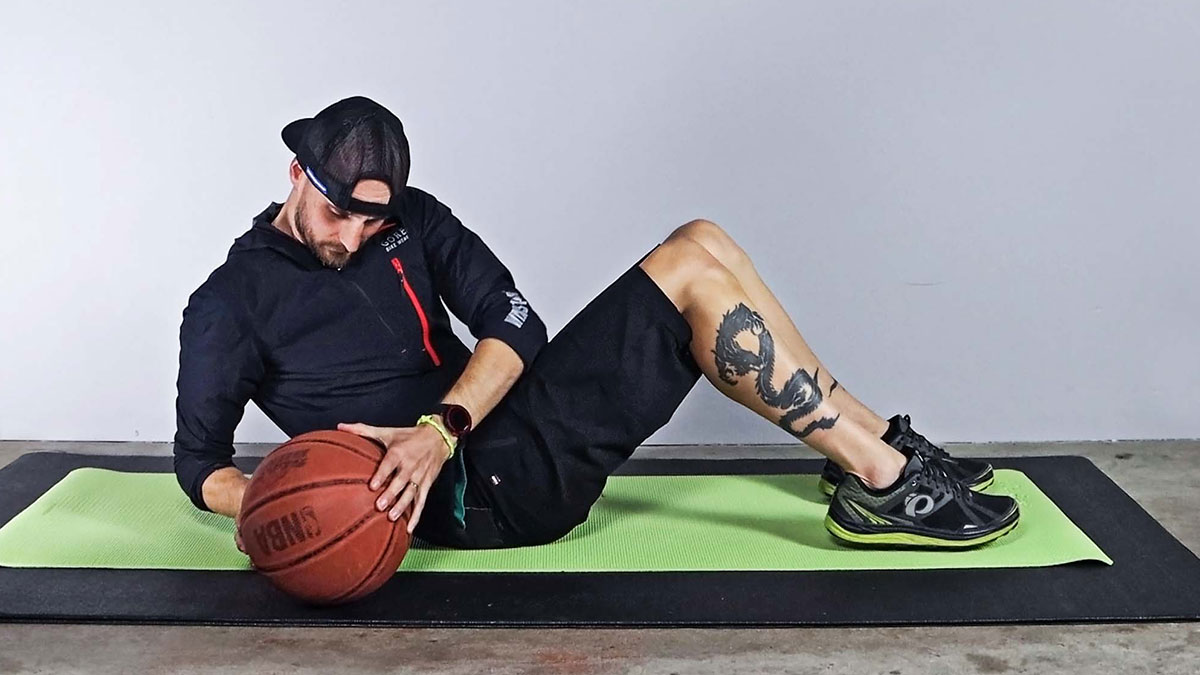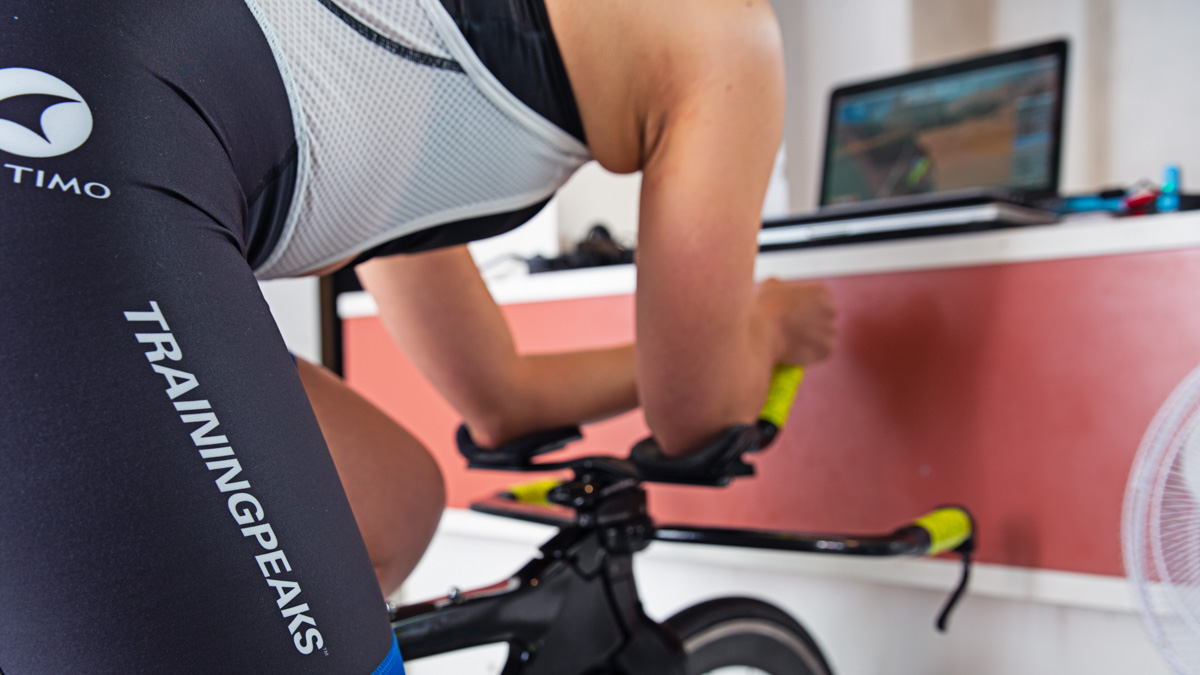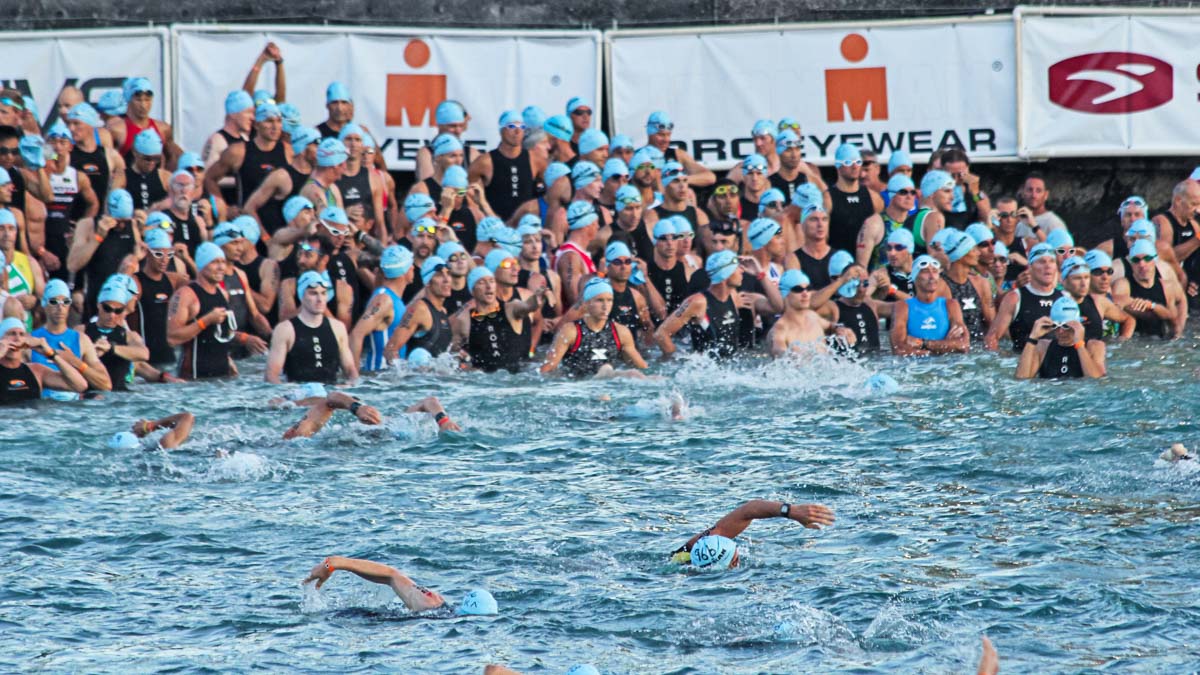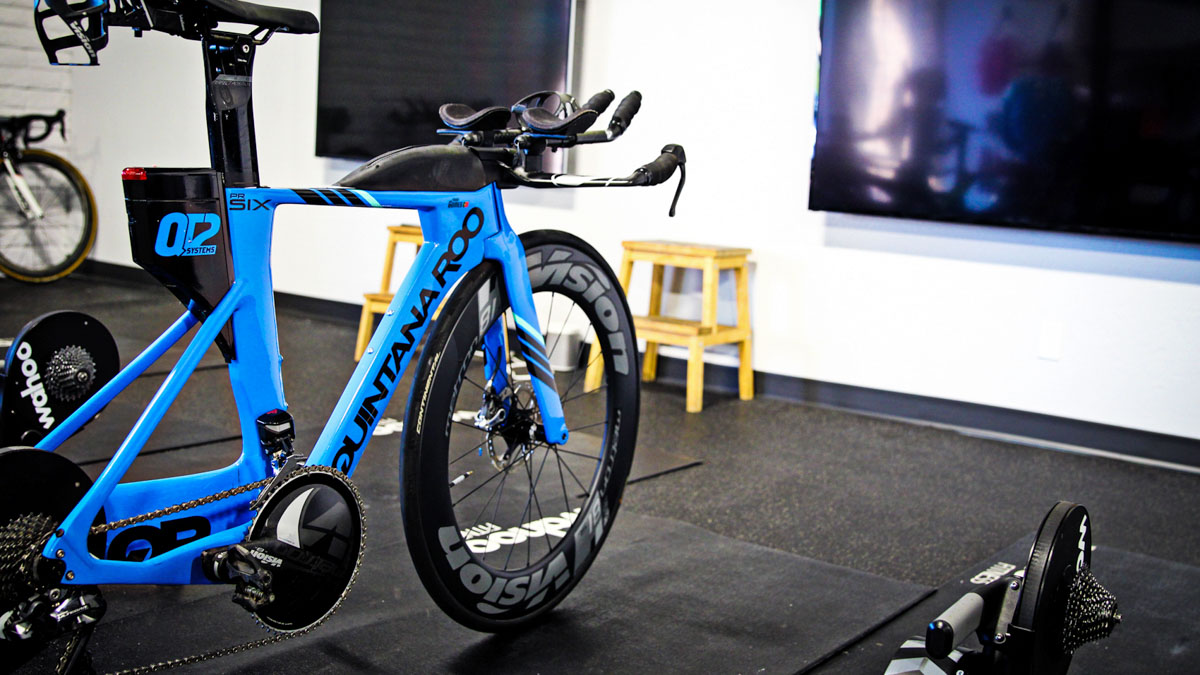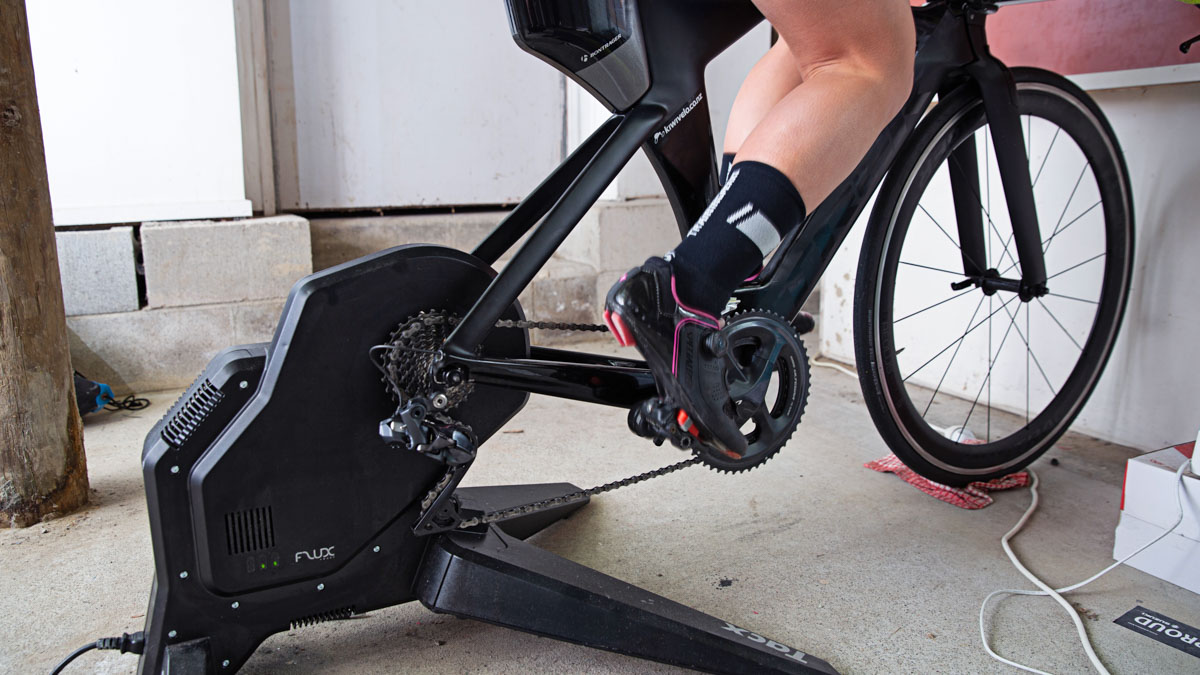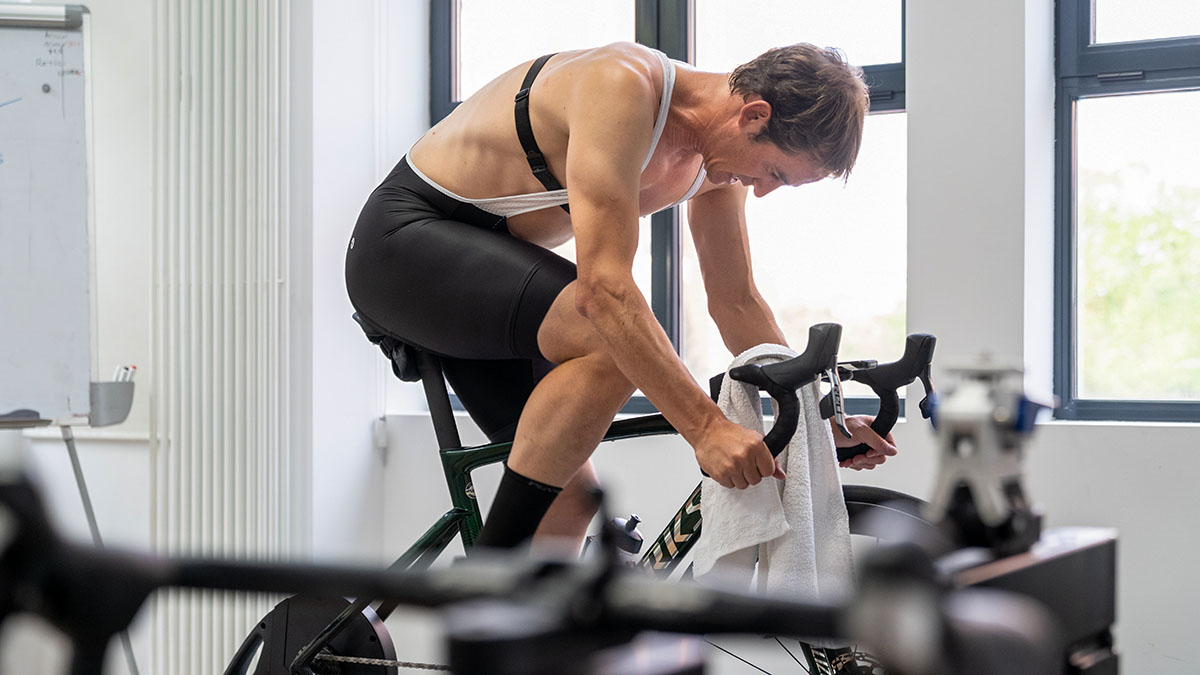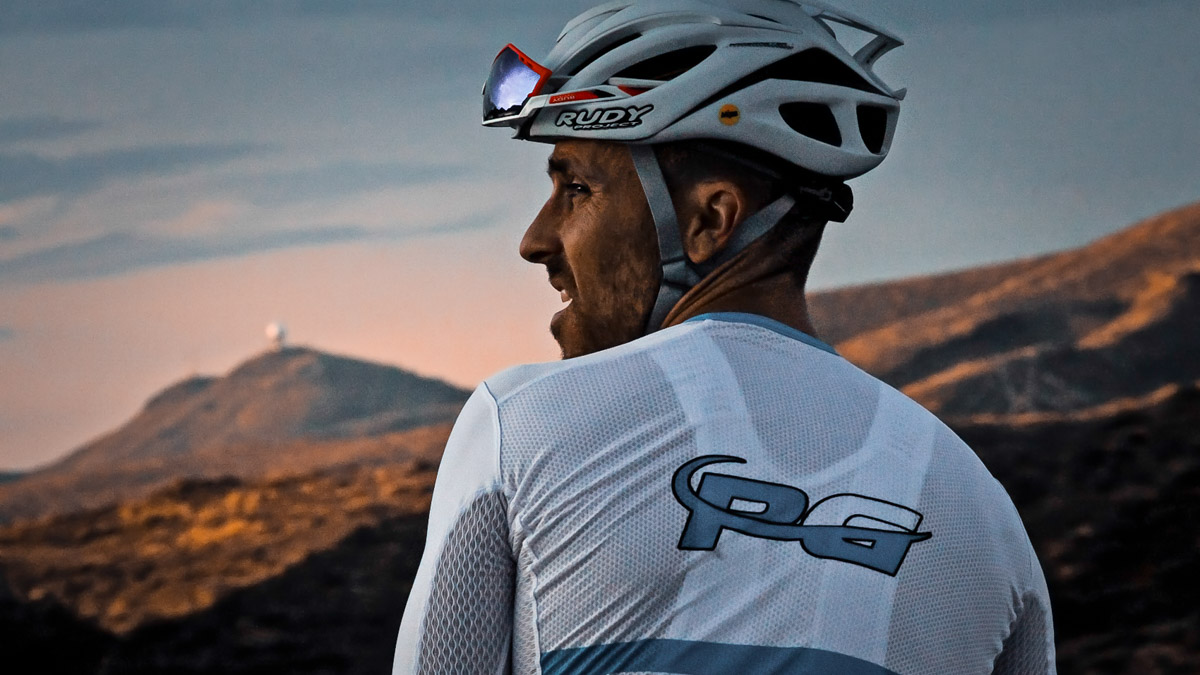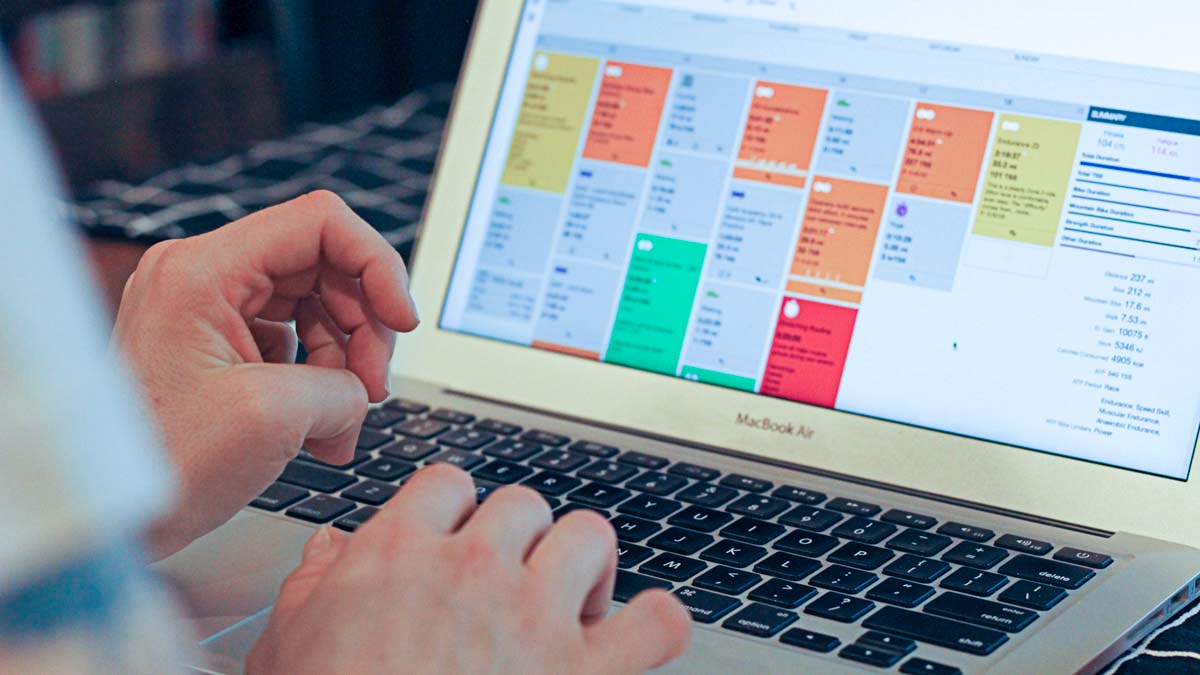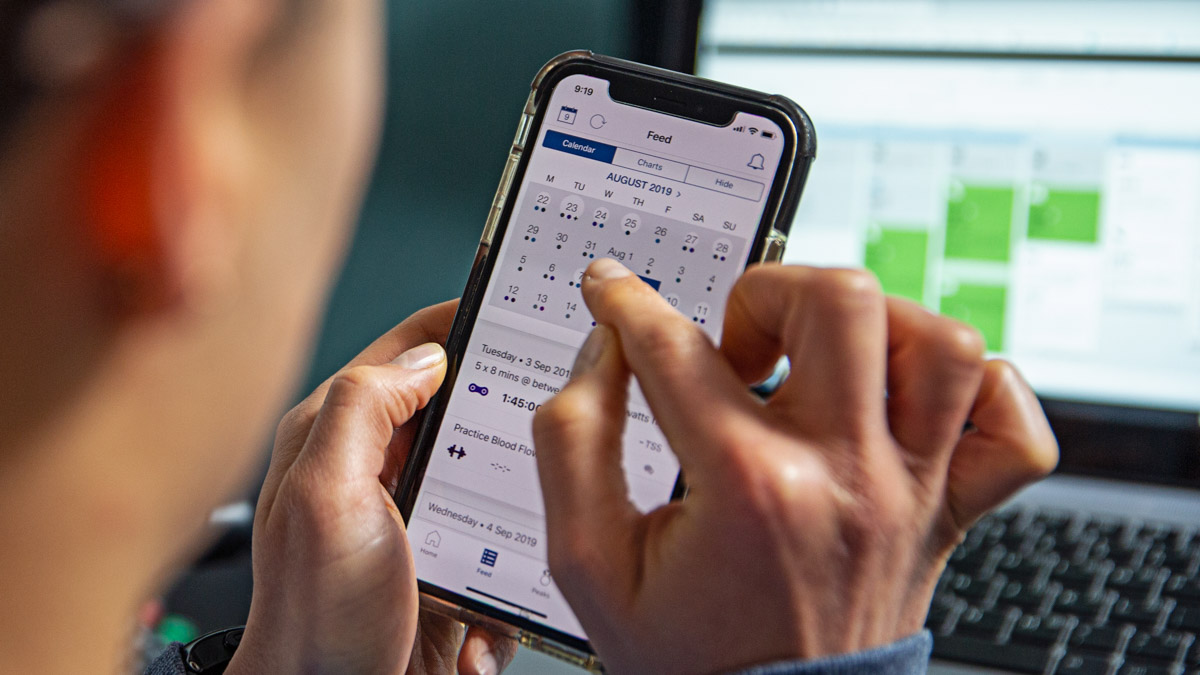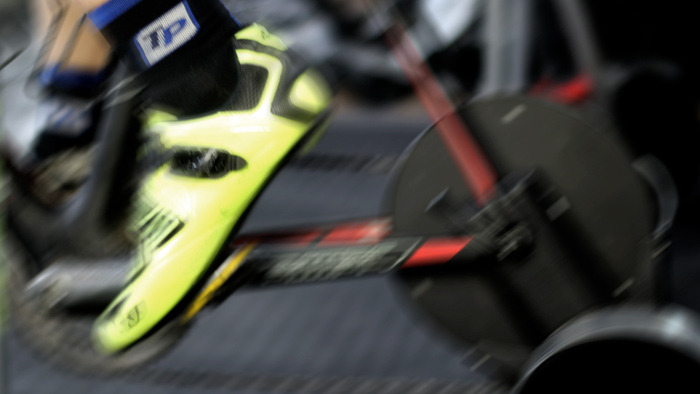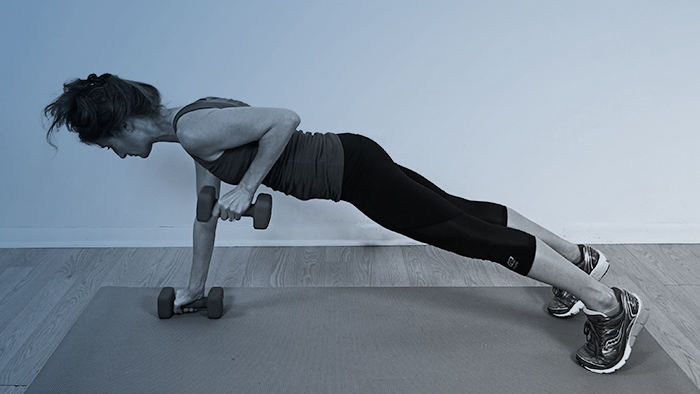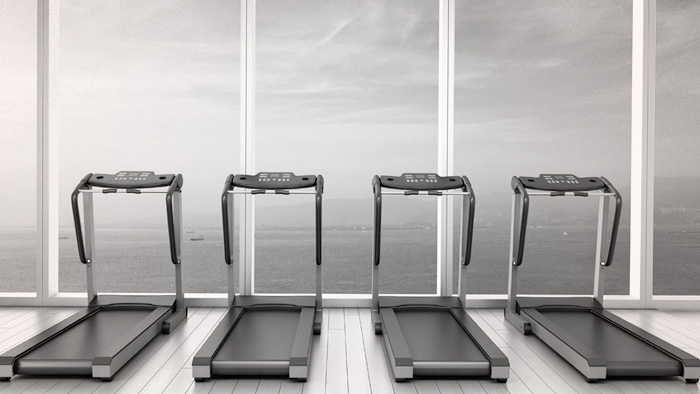CHAPTERS
RACE DAY CHECKLIST
THE COMPLETE INDOOR WORKOUT TRAINING GUIDE
WELCOME
There are many benefits to working out at home. Above all else is convenience. You can fit in training with your busy schedule without having to account for weather, travel times or gym hours. Indoor training also allows you to focus on yourself and your target pace while minimizing distractions.
You don’t need the latest equipment or fancy setups to get an effective workout at home. This guide will help you stay motivated, focused and informed on how to get the most out of your indoor training.
Start a Free TrainingPeaks Account
TrainingPeaks offers the world’s most powerful training app, allowing you to plan, track, and analyze your training all in one place. Sync your account with your favorite apps and devices for real-time workout guidance and watch your fitness progress with powerful data tools.
Start for Free
Indoor Training Fundamentals
Having a sound indoor workout regimen should be an important part of every endurance athlete’s training plan. This guide will show you how to set up your very own pain cave, maintain and improve your mental focus and provide tips for structuring your indoor exercise routine.
FURTHER READING
Pain Cave Setup
By Tim Ballintine
Is the objective of building a pain cave to include as many distractions from the feeling of pain? It may seem like it, as athletes take their pain caves to incredible levels to ensure that indoor training minutes tick by with maximum entertainment and comfort. We’ve all seen the photos of riders logging virtual group rides or pouring sweat indoors. Fortunately, your very own pain cave doesn’t have to be fancy to be effective. Here are a few things you’ll need to get started training indoors.
Strength and Mobility
First, you’ll want to designate a space to practice strength and mobility. This can be as simple as a basic yoga mat in a quiet room— but with more and more of our training heading indoors, it’s likely that you’ll want to grab a few basic strength and mobility tools as well.
Resistance bands are a great tool to hit almost every muscle group, and a mid-weight medicine ball can be used to amplify most basic exercises. Tools for self-massage, like a foam roller or trigger-point massage ball, can facilitate recovery—or just help you de-stress after a long day in quarantine.
Even if you don’t have any gear, do your best to designate a quiet, clutter-free space to do your workouts. This will help you stay mentally engaged and motivated to follow your routine.
Choosing a Trainer
Many cyclists and triathletes turn to an indoor cycling setup, even in normal times, to do their structured workouts. Whether you prefer rollers, a smart trainer or a standard trainer, an indoor cycling setup is cheaper and saves more space than a treadmill—which makes it one of the easiest ways to get your cardio session indoors.
When choosing an indoor trainer, the first thing you’ll want be sure of is whether it is compatible with your bike. Most indoor setups interface with the bike through an axle, so when you’re shopping you’ll want to know your axle diameter and whether it’s a quick-release or thru-axle—and check whether the trainer you’re interested in offers compatibility.
Perhaps the most widely-compatible setup is a set of standard rollers—which are not actually attached to your bike. To ride rollers, simply set your bike on the cylinders, start pedaling, and you’ll be able to ride in place while balancing yourself, exactly as you would outside. Rollers provide a realistic feel, but are limited on resistance options and require some skill to master.
Trainers hold your bike upright and in place, so you don’t have to worry about balancing. They can be divided into two categories: wheel-on and direct drive. With a wheel-on setup, you clamp the trainer to your rear axle, which positions your rear tire on a roller to provide resistance. With a direct drive trainer, you remove the rear wheel and clamp the bike to the trainer via the dropouts. Your chain just runs direct to a cassette mounted to the trainer, which provides the resistance.
You might have also heard the phrase “smart trainer.” This is essentially a trainer that can send data to an app like Rouvy or Zwift, and receive inputs like targeted workouts, to help make your riding experience more realistic. The cheaper alternative, sometimes called a “dumb trainer,” just provides steady resistance on your back wheel. You can get a great workout, but you may miss the more interactive elements and targeted workout capabilities.
Trainer Accessories
At the very minimum, you’ll want to shout yourself a nice fan and a floormat, because things get pretty hot and sweaty training indoors! If this is your first experience with training inside, you may be surprised by how warm you get without the regular airflow you experience riding outdoors. Sweat can also be somewhat corrosive, so you may want to protect your floor, and cover the headset of your bike with a towel or t-shirt.
Things like a fan; a tall desk to keep your bottles, entertainment and sports nutrition within reach; and a nice set of bluetooth headphones can all enhance your experience. Your favored setup will expand as you get used to training inside—don’t be afraid to get creative!
As with your strength and mobility setup—your cardio space will reflect your personality and goals as an athlete. Ask any proud owner, and they’ll be able to explain why every piece of equipment has its place—even the DIY medal rack, the strategic fridge that balances the iPad, the fan on the 4th shelf, or the 6-year-old finisher towel. Be proud of your pain cave! You’ll be spending some quality time together in the coming months.
Tim Ballintine is the founder of Koa Sports and the Koa Sports League, a full-time endurance and e-sports coach. A husband, father and age grouper. Tim is a level 2 TrainingPeaks Coach, accredited with Triathlon Australia, Swimming Australia, Athletics Australia and BBUS. 5 x 70.3 champion and course record holder, 2 x Hawaiian Ironman and 8:51 PR.
FURTHER READING
Improve Your Mental Game
By Carrie Cheadle
In general, humans don’t like unknowns. The COVID-19 pandemic created a lot of them — and it put racing on hold for thousands of athletes. As challenging as it was, it taught us some valuable lessons about balancing our goals with our mental health.
While racing has returned, we should not lose focus of the importance of managing stress and keeping yourself mentally healthy. Here’s what you can do to care for your mental health through adversity.
Establish a Mental Health Foundation
The first step to protecting your mental health is to try and pull yourself back to the present rather than focusing on the “what if’s.” Start by focusing on your breath. Actually do this! Just two or three breaths will help you hit pause on the physiological panic button, and allow you to focus on what you know, right now.
Next, spend some time thinking about your daily routine. Mental health suffers without a sense of normalcy, so if you just said “what routine?,” it’s time to figure that out. Creating a routine doesn’t mean you have to be driven and productive with every moment of your day.
It’s essential to incorporate stress-management as well. Get some fresh air. Take a break from your newsfeed and do some yoga. You’ll want to schedule in two or three things daily to combat the stress your central nervous system is under. Once you’ve established that foundation, you can start thinking about your training.
Adjust Your Goals
You may need to deliberately adjust your athletic goals to respond to disruptions to your daily life. This adjustment is important, because if some part of you remains emotionally attached to your old plans, you’ll continue to gauge your success based on that original goal, which is most likely no longer realistic. Fail to adjust course, and you’ll just set yourself up for added stress, not progress.
One option is to go into “maintenance” mode. Added stress puts us at higher risk for injury, so there’s nothing wrong with focusing on exercise for maintenance or stress management, rather than performance gains. Another option is to think about how you can use this time as an opportunity to work on other areas of your training. Are there any strength or mobility gains you could be working towards? Could you improve some of your mental skills? Whatever you decide to focus on, it’s important to put pen to paper and deliberately adjust your goals.
It’s also important (and okay!) to grieve the loss of your original goal. If you find yourself feeling guilty for being upset — perhaps because other people are going through bigger challenges right now — don’t do that to yourself. It’s okay to be upset that you’re missing out on something important to you.
Cultivate Resilience
I recently co-authored a book called Rebound: Train your mind to bounce back stronger from sports injuries. In the book my co-author and I describe resilience as “the power to bounce back from hardship or adversity, and thrive despite setbacks.” Your ability to overcome challenges and rise once again after you’ve been knocked down has to do with a psychological construct called hardiness.
“Hardy people are able to effectively cope with stress, and research shows athletes high in hardiness versus low in hardiness are more likely to experience stress-related growth outcomes as a result of their injuries.”
Hardiness consists of three aspects: commitment, control and challenge.
Commitment
Refers to the ability to persevere; to keep putting one foot in front of the other in the face of difficult times. You stay involved, seeing things through to the end despite obstacles you may encounter.
Control
Refers to the ability to not feel helpless in the face of difficult times. You believe you are capable of influencing the circumstances of your life, understand that certain things are out of your control, and take action to address the things you can influence.
Challenge
Is the inclination to see that stressors are a normal and ongoing part of life. You know setbacks are not threats to safety and security, but rather challenges and opportunities for deepening understanding and growth.
How you respond to challenges is all in your perception of it. Treat yourself with compassion, kindness and grace, and keep reaching out to your community. You can do this!
Carrie Jackson Cheadle, MA, CMPC is a professor of sport psychology and an expert in Mental Skills Training. She consults with athletes of all ages and at every level, from recreational athletes to elite and professional athletes competing at national and international levels. Carrie is author of On Top of Your Game: Mental Skills to Maximize Your Athletic Performance and co-author of Rebound (Bloomsbury, 2019) focusing on mental training for injured athletes.
FURTHER READING
Quick Start Workouts
Want some ideas on how to structure your week of training? Try a sample week from one of these coaches, all of whom specialize in indoor workouts. If you like what you’re reading, you can find full training plans from each coach through the links provided, or check out our indoor training plan page, for a curated collection of affordable 4-8 week training plans, which you can purchase and apply instantly to your TrainingPeaks calendar.
If you’re a coach and you’d like to write an indoor training plan, here’s how to get started.
Indoor Cardio Week From Shayne Gaffney
“With all psychological stress we’re dealing with on an everyday basis, keeping things light and enjoyable is key. These workouts are also on the shorter side to respect that everyone’s schedule is out of whack. I also made sure to include some cross-training in the form of stretching, and core/hip stability work.”
View Shayne’s website, training plans, and podcast.
| MONDAY | Ride: Sweet Spot Ramps A sweet spot (SST) focused workout where you’ll accumulate 30 minutes total at that intensity. This ride is 55 minutes long and has an eight-minute warmup, followed by 3x (10-minute @SST + five minutes recovery), five-minute cooldown. |
| TUESDAY | Ride: VO2 Max – 3min In today’s session, we are focusing on 3min VO2 max efforts. However, we are going to increase the intensity of each interval. Starting with a hard effort and finishing with hardest! This ride is 55 minutes long and has a 20-minute warmup, followed by 4x (three minutes @VO2 Max + four minutes zone 2), five-minute cooldown. |
| WEDNESDAY | Run: Endurance A zone 2/3 run, but every eight minutes we’re ramping up the treadmill incline starting at two percent and finishing at 10 percent by the end. This run is 53 minutes long and has an eight-minute warmup, 40 minutes at zone 2/3, 5-minute cooldown. |
| THURSDAY | Run: Fartlek Intervals A Fartlek variation with increasing interval lengths and decreasing intensities. Fartlek runs challenge the body to adapt to various speeds, conditioning you to become faster over longer distances. This run is 35 minutes long and has an eight minutes warmup, followed by five hard intervals of different lengths, one- to two-minute recovery, four-minute cooldown. |
| FRIDAY | Ride: Surge to Sweet Spot A race start simulation workout with an initial very hard effort followed by a sweet spot (SST) ramp. This ride is 51 minutes long and has an eight-minute warmup, followed by 3x (hard surge effort, followed by eight minutes @SST + 5min recovery), five-minute cooldown. |
| SATURDAY | Ride: Endurance Ride An endurance ride consisting of mainly zone two, but with some low cadence work at zone three to break things up. This ride is 60 minutes long and has a 10-minute warmup, followed by 9x (3.5 min @zone two + 1.5min @zone three), three-minute cooldown. |
| SUNDAY | Run: Ladder Intervals This workout is designed to improve your running speed and fatigue resistance. It starts and ends with the most difficult intervals which specifically targets improving race starts and finishes. This run is 30 minutes long and has an eight-minute warmup, followed by eight hard intervals of different lengths, with one minute recovery, and a three-minute cooldown. |
Foundational Week from Laura Marcoux
“This week of workouts was designed to build strength on top of your early-season base, recommit to mobility, and have fun! While the exercises listed are by no means easy, they also don’t require you to lift anything heavy, so the whole family can get involved!”
View Laura’s other training plans.
| MONDAY | Aerobic 45-minute bike ride & full body circuit |
| TUESDAY | Aerobic 30-minute run & mobility circuit. |
| WEDNESDAY | 60 minute Trainer Ride with drills & skills 10-minute aerobic warmup 5x single leg drills: (spin for one minute with your right leg, one minute with both legs, one minute with your left leg) Five minutes aerobic spinning 3x cadence over/unders: (three minutes @60-65 rpm’s, three minutes @100-110 rpm’s) 10-minute cooldown |
| THURSDAY | 35-minute Fartlek run & upper body circuit. 30/60/90 Run: Challenge yourself to find three distinct gears. 10-minute aerobic warmup with dynamic stretching 5x: (30 seconds fast, 60 seconds moderate, 90 seconds easy recovery) 10-minute aerobic cooldown |
| FRIDAY | Option one: Rest and enjoy time with your family. Option two: Cross-training: If you are able and the weather allows, go for a hike, take an online yoga class, do a rowing workout, walk your dogs, etc. |
| SATURDAY | Bike/Strength/Bike Sandwich! First Bike workout: 60 minutes with 8x: (one minute fast/three minutes recovery spin) Mobility & Agility Circuit Second Bike workout: 30 minutes aerobic, building into holding a higher than average cadence (aim for 100+ rpm’s) |
| SUNDAY | Aerobic 45-60 minute run & core workout. |
Triathlon and Mental Wellness Week from Heather Casey
“In this 8-week training plan, each week progresses in a way that allows you to see your progress and feel good about it! In addition to triathlon-themed workouts, you’ll have direct links to yoga (with core and strength activations), and guided meditations to help you reconnect with your “why.”
View Heather’s full 8-week training plan.
| MONDAY | 35 minutes of Yoga 30 minutes of dry land swim & core Mindfulness activity |
| TUESDAY | 45 minutes of bike with tension intervals 20 minute step down brick run |
| WEDNESDAY | 15 minutes of dry land swim cords with intervals 40 minutes run, short & sharp |
| THURSDAY | One-hour bike with intervals Full body strength short session |
| FRIDAY | 30-minute run with intervals 30-minute dry land swim cords with intervals |
| SATURDAY | 90+ minute bike Pyramid endurance intervals Meditation practice |
| SUNDAY | 50-minute endurance run with structure Lower body strength session |
FURTHER READING

How It Works
Choose an indoor training plan from the lists below. Apply your plan and the workouts will be automatically added to your TrainingPeaks calendar. Next, export your workouts to your favorite indoor training app and get your sweat on!
Triathlon Indoor Plans
Cycling Indoor Plans
Running Indoor Plans
Other Indoor Plans
Additional Training Plans
Looking for even more training plans? Choose from a wide variety of training plans for triathletes, cyclists, and runners of all abilities.
Find a Plan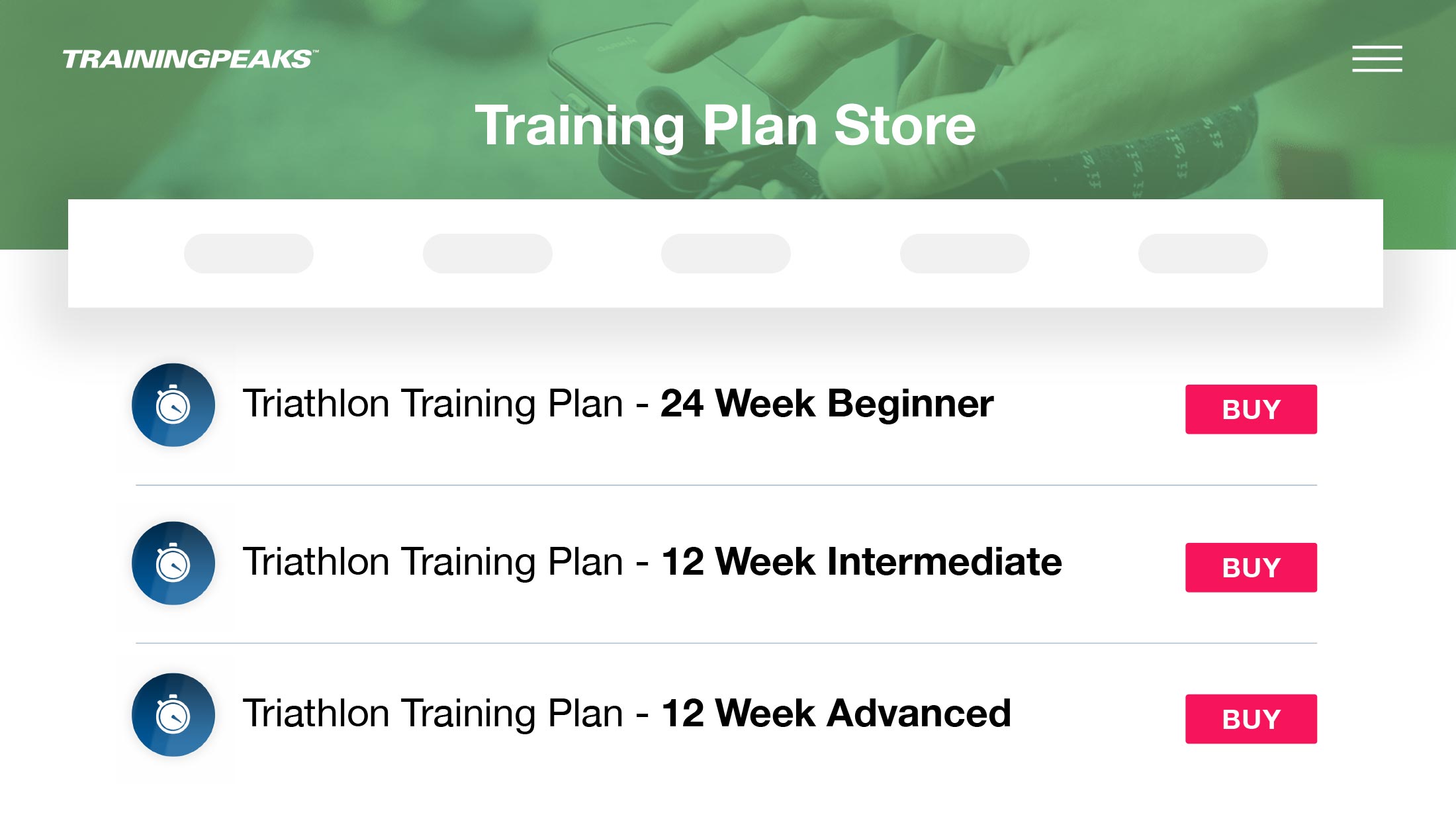
Strength
These five moves are selected to give you a full-body workout, using only your body weight. You’ll find technique tips under each move, as well as ways to increase or decrease the difficulty as needed. The number of reps/sets you do will depend on your fitness level, but it’s a good rule of thumb to do only as many reps per set as you can manage with proper form—if you notice your balance or alignment starting to decline, stop and rest! Pushing past this point can compromise the effectiveness of the move and put you at risk of an injury.
Bulgarian Split Squat
The Bulgarian split squat works your glutes and quads, with a balancing element as well, if you choose to use a ball to elevate your non-working leg. It’s important to keep your working knee aligned over your toe and use those target muscles to achieve the movement. If you’re having a hard time keeping your balance, engage your core and focus on a specific point on the wall or floor in front of you.
Make it harder: Hold a medicine ball or weights at your hips, near your center of gravity.
Make it easier: Instead of elevating your working leg, just plant that foot on the ground instead.
Bird Dog
The Bird-dog exercise activates your glutes, lower back muscles, core and shoulders. Start in a table-top or quadruped position, and extend your left arm and right leg so they’re parallel with the ground. Try to maintain a straight line from your extended leg through your extended arm by engaging your core, shoulders, and glute.
Make it harder: Bring your extended arm and leg back towards your core, then bring your elbow and knee together, contracting your abdominal muscles. Repeat.
Make it easier: Extend your arm and leg separately until you feel confident and stable raising both at once.
Step Back Lunge with Knee Drive
The step back lunge with knee drive challenges your body awareness while working your glutes and hips. Practice good lunge form by keeping your working knee aligned with your toe, and lowering only until your thigh is parallel to the floor. When you come out of the lunge into the knee drive, use your core to drive your knee towards the ceiling. If you’re having a hard time keeping your balance, engage your core and focus on a specific point on the wall or floor in front of you.
Make it harder: Hold light weights, and reach up with the arm opposite your driving knee on each rep.
Make it easier: skip the knee drive and focus on perfecting the step back lunge.
Plank
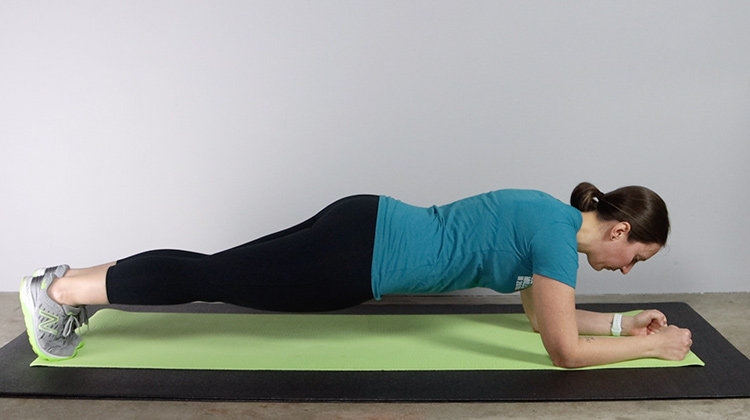
The plank engages your entire core, back glutes and shoulders. Deceptively simple, it’s one of the most effective ways to strengthen the main supporting muscles in your body. Make sure to keep your hips in line with your shoulders while performing this move—don’t allow them to sway towards the floor or fold up towards the ceiling. Keeping everything in line ensures that you’re using your core to support yourself.
Make it harder: Try lifting your feet and hands alternately off the ground while stabilizing by engaging your glutes.
Make it easier: Just go for shorter intervals—try to add ten seconds to each session and work your way up to a minute (or more!)
Glute Bridge
As the name suggests, the glute bridge activates your glutes. Lay on your back with your hands on the floor near your hips, knees bent and feet planted hip-width apart.. Activate your glutes, and raise your hips off the floor to make a straight line through your torso and thighs. Be sure to lift from the hips with a neutral back. Avoid compensating by arching the back to achieve lift. To add to the challenge, isolate a single side by lifting one leg off the ground.
Make it harder: Hold a medicine ball or weight on your hips.
Make it easier: Skip the single-side isolation.
Russian Twist with Med Ball + Press
The Russian twist works your obliques, shoulders and hip flexors. Start on your back, and raise your torso and legs off the ground so you’re balancing on your tailbone. Rotate your torso to each side while maintaining a stable core. Keep a long, neutral spine by lifting the chest upwards.
Make it harder: Hold a medicine ball or weight, and press up between each side.
Make it easier: Rest your feet on the ground.
Mobility
The following mobility moves can be done as activations before a workout, or as a cool-down afterward. Do them regularly for more efficient movements and balanced strength.
Foam Roller
Foam rolling is thought to have three recovery benefits: increasing blood flow; breaking up adhesions between the muscle, fascia, and skin; and facilitating neuromuscular release. For best results, always roll towards your heart, and focus on major muscles, avoiding passive soft tissue (like your IT band) which may actually become tighter and more irritated when rolled. Foam rolling should feel slightly uncomfortable—but not painful.
Lunge with Thoracic Rotation
Start in a high plank or push-up position, then bring your left foot up even with your left hand, into a low lunge. Lift your left arm up towards the ceiling, rotating your head and torso as you do. For an added variation, you can return your left hand to the ground, and let your left knee drop to the outside of your body, to stretch and open your left hip. Repeat on both sides.
Cat-Cow
Cat-Cow helps move your spine through a healthy range of motion and reverse some of the movement patterns many of us fall into while sitting at a desk or riding a bike. Start on hand-and-knees, and go through several rotations of cat (arched back) and cow (swayed back). For best results, inhale in cow, and exhale in cat.
Hip Boxes
Sit on the floor with your legs bent at 90 degrees and feet planted just wider than your hips. Drop both knees towards the ground in the same direction, keeping your feet static. For best results, try to push your knees gently into the ground (if you can reach) during each repetition. Rotate knees to each side, left then right, for at least a minute—not only is it a good activation, but it will increase the flow of synovial fluid in your hip joints. The keys to this movement are a 90-degree knee & hip angle, static feet, and maintaining a tall chest position that faces forward.
Couch Stretch
This is another good stretch to address hip flexor tightness created by sitting at a desk or on a bike. Take a knee with your front leg at a 90-degree angle and your rear foot resting on the floor, or elevated on a yoga block, or a piece of furniture (this is the leg you’ll be stretching). Engage the glute of your rear leg to bring that hip forward aligning your pelvis. You should feel a stretch throughout your hip flexor and quad. If you don’t feel anything, make sure to tuck your tailbone, neutralize your spine and lift through your chest. Reaching your arm upwards on the same side as your rear leg will lengthen your side body to add depth to this stretch.
Virtual Community
There’s never been a better time to train indoors. With new platforms and virtual events emerging daily, working out in your home can be entertaining, social, and (dare we say it?) even fun! Below you’ll find our evolving list of virtual resources. Check back often for new additions!
Cycling
TrainingPeaks Virtual
TrainingPeaks Virtual, formerly known as indieVelo, is an indoor cycling platform created to serve the needs of athletes, coaches and event organizers. With community-friendly features, realistic racing physics, and a focus on credibility, TrainingPeaks Virtual takes indoor cycling to the next level. Similar to other indoor cycling platforms, TrainingPeaks Virtual allows athletes from around the globe to ride together in rich, 3D-generated worlds, simply by connecting a trainer or power meter.
You can log in to TrainingPeaks Virtual with your TrainingPeaks athlete login credentials (or create a new TrainingPeaks account), and connect your TrainingPeaks account for a seamless experience. TrainingPeaks Virtual is currently free for everyone. After March 2025, TrainingPeaks Virtual will be part of TrainingPeaks Premium.
Zwift
See Zwift’s complete list of events here. There’s also a virtual league available through USA Cycling, with categorized races.
Best Bike Split
You can now find the Zwift World Routes in Best Bike Split. View pre-created “race plans” for each of the Zwift routes (called courses in BBS) and adjust power, drag, and weight to your specifics to get custom race data for the route—including an estimated finish time. You do not need to have a BBS account or be logged in to use this feature.
BKool
BKool let’s you experience indoor cycling like never before, and challenge yourself on some of the most spectacular routes on the planet. You can choose where and when you want to train, from the stunning Alpe d’Huez to the intense velodrome.
Rouvy
Rouvy hosts 10s of events a day. View their calendar of online events.
Cycling Training Plans
Browse some of our most popular cycling training plans.
Running
Zwift
You may think of Zwift as a platform for cyclists, but it supports runners as well, with group runs and events available for a variety of distances and paces.
See Zwift’s complete list of events here and use the filters provided to find a running event.
Run The Edge
If you’re looking for motivation and community, Run The Edge is offering virtual races in every distance from 5K’s to ultramarathons. Runs can be uploaded via Garmin, Fitbit, Apple, Strava or manually through the honor system.
Running Training Plans
Browse some of our most popular running training plans.
Multisport
Wahoo/Sufferfest
To help athletes thrive during this challenging time, the Wahoo Sports Science team created a series of training plans for cyclists and multisport athletes. These comprehensive, structured 4-week training plans are designed specifically to be done indoors; to help improve your overall fitness, learn new mental training skills, and build a foundation for further development.
If you have a Sufferfest account, use the code ALLINSUFPLAN for 30 days free, in addition to the standard 14-day free trial.
SportStats
SportStats has a number of events in various disciplines.
Virtual Sports Racing
Born virtual, the platform’s focus is exclusively on virtual running, cycling and swimming, as well as gym-based activities such as elliptical, rowing and stairclimbing.
ChallengeHound
ChallengeHound offers the opportunity to create challenges for your group or team. It’s a great way for coaches and athletes to keep groups engaged and motivated.
Triathlon Training Plans
Browse some of our most popular triathlon training plans.
Strength and Conditioning
Wahoo/Sufferfest
Wahoo and Sufferfest are offering a series of yoga training plans. These comprehensive, structured 4-week training plans are designed specifically to be done indoors; to help improve your overall fitness, learn new mental training skills, and build a foundation for further development.
If you have a Sufferfest account, use the code ALLINSUFPLAN for 30 days free, in addition to the standard 14-day free trial.
